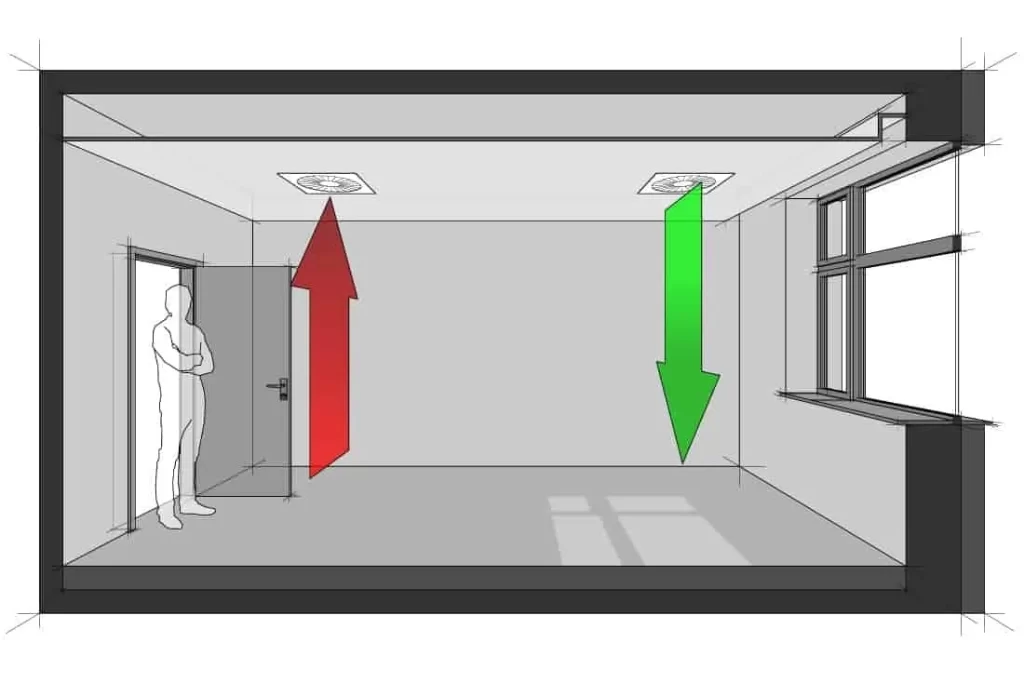Debunking Attic Ventilation Myths
Attic ventilation is a crucial aspect of maintaining a healthy home environment and extending the lifespan of your roof. However, there are numerous misconceptions surrounding attic ventilation that can lead homeowners astray. In this comprehensive guide, we will debunk some of the most common myths and provide you with accurate information to make informed decisions about your attic ventilation system. So let’s dive in and separate fact from fiction.

1. Attic Ventilation: The Key to a Healthy Home
Attic ventilation is often misunderstood, but it plays a crucial role in maintaining a healthy home environment. Proper attic ventilation helps regulate temperature, control moisture levels, and prevent the accumulation of harmful pollutants. Despite its importance, there are several myths surrounding attic ventilation that need to be debunked.
2. Myth: More Ventilation Means Better
One common misconception is that more attic ventilation is always better. However, the truth is that proper ventilation is about finding the right balance. Insufficient ventilation can lead to moisture problems and decreased energy efficiency, while excessive ventilation can create vulnerabilities for water intrusion. It is essential to consult a professional to determine the optimal amount of ventilation your home needs based on its size and specific requirements.
3. Myth: Ventilation Is Only Beneficial in Warm Climates
Another myth is that attic ventilation is only necessary in warm climates to improve energy efficiency. While ventilation does help expel extreme heat from the attic, other factors such as insulation and reflective roof surfaces have a more significant impact on energy efficiency. In colder climates, adequate attic ventilation is crucial to prevent moisture damage. Ventilation helps remove moist indoor air, keeping the attic dry during the winter season.

4. Myth: Roof Vents Leak Warm Air Out in Winter
Some homeowners believe that roof vents leak warm air out in the winter, potentially reducing heating efficiency. However, if warm air is escaping through your attic, it indicates a problem with insulation, not ventilation. Proper insulation should prevent warm air from entering the attic, ensuring that your heating system functions efficiently.
5. Myth: The Presence of Roof Vents Is Equivalent to Proper Ventilation
Having roof vents does not automatically guarantee proper ventilation. Different types of roof vents serve different purposes, and it is important to choose the right vents for your specific needs. While a combination of ridge and soffit vents is often effective, the optimal ventilation design varies depending on your roof’s unique characteristics. Consulting an experienced roofing professional will help you identify the best ventilation solution for your home.
6. Determining the Right Amount of Ventilation
Determining the right amount of attic ventilation is crucial for maintaining a healthy home. It is essential to strike a balance between intake and exhaust vents to ensure proper airflow. The square footage of your attic floor and the net free area (NFA) of vents are key considerations in calculating the ventilation requirements.
To calculate the required NFA, consider the following guidelines:
- If your attic floor has a vapor barrier, you will need one square foot of NFA for every 300 square feet of attic floor area, evenly divided between intake and exhaust vents.
- Without a vapor barrier, double the NFA to one square foot for every 150 square feet of attic floor space, evenly divided between intake and exhaust vents.
These guidelines provide a starting point, but it is crucial to consult local building codes and a professional to determine the specific ventilation requirements for your home.
7. Common Types of Vents
There are several types of attic vents available, each serving a specific purpose. Understanding the different types will help you make informed decisions about your attic ventilation system. Here are some commonly used attic vent types:
- Ridge Vents: Ridge vents are installed along the ridge of the roof and provide continuous ventilation. They are often combined with soffit vents to create an effective airflow system.
- Soffit Vents: Soffit vents are installed in the eaves or soffits of the roof, allowing fresh air to enter the attic. They work in conjunction with ridge vents to create a balanced airflow.
- Gable Vents: Gable vents are placed in the gable walls of the attic and allow air to circulate vertically. They are suitable for attics with complex roof designs or limited soffit space.
- Static Vents: Static vents are non-moving vents that provide passive ventilation. They are commonly installed on the roof or near the ridge to allow hot air to escape.
- Turbine Vents: Turbine vents utilize wind power to create a suction effect, expelling hot air from the attic. They are effective in areas with consistent wind patterns.
Choosing the right type of vent depends on various factors, including your roof design, climate, and specific ventilation needs. Consulting a professional will help you determine the most suitable vent type for your attic.
8. The Role of Attic Ventilation in Energy Efficiency
Attic ventilation plays a crucial role in improving energy efficiency, although it is not the sole factor. While ventilation helps expel hot air and prevent heat buildup in the attic, other elements such as insulation, reflective roof surfaces, and proper sealing contribute significantly to energy efficiency.
Insufficient ventilation can trap heat in the attic, leading to higher cooling costs in the summer. On the other hand, excessive ventilation can create drafts and reduce heating efficiency in the winter. Achieving the right balance of ventilation, insulation, and other energy-efficient practices is key to maximizing your home’s energy efficiency.

9. The Importance of Proper Installation and Maintenance
Proper installation and regular maintenance of your attic ventilation system are critical to ensuring its effectiveness. Improperly installed vents or neglected maintenance can lead to various problems, including leaks, inadequate airflow, and decreased efficiency.
When installing attic vents, it is important to follow manufacturer guidelines and local building codes. Proper placement and sealing of vents are essential to prevent water intrusion and maintain optimal airflow. Regular inspections and maintenance, including cleaning debris and checking for any damage, will help ensure that your attic ventilation system is functioning properly.
10. Consulting a Professional for Ventilation Solutions
Given the complexity and importance of attic ventilation, it is advisable to consult a professional roofing contractor for expert advice and solutions. An experienced professional will assess your home’s unique requirements, recommend the appropriate ventilation system, and ensure proper installation.
Professional roofers have the knowledge and expertise to determine the optimal balance of intake and exhaust vents, select the right vent types, and ensure proper placement and sealing. They will also provide guidance on maintenance and address any concerns or issues related to your attic ventilation system.
In conclusion, understanding the truth behind common attic ventilation myths is essential for maintaining a healthy home and prolonging the lifespan of your roof. By debunking these myths and seeking professional guidance, you can make informed decisions about your attic ventilation system and create an optimal environment for your home. Remember, proper attic ventilation is the key to a healthier and more efficient home.
